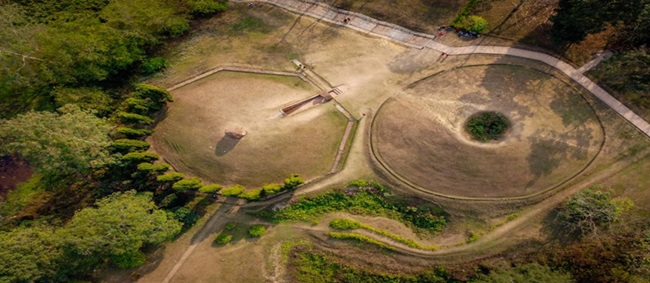(Preliminary Exam: History of India)
(Main Exam, General Studies Paper- 1: Salient aspects of Art Forms, Literature and Architecture in Indian Culture from Ancient to Modern Period) |
Reference
Moidam located in Charaideo district of Assam has been recommended for inclusion in the UNESCO World Heritage List. Currently it is included in the tentative list of UNESCO World Heritage Sites.
Key points
- ‘Charaideo Moidam’ is a burial stupa of the Tai-Ahom kingdom in Assam. It was the burial tradition of the Tai-Ahom community of Assam until the 18th century.
- The 'Moidam' or mound-burial system of Charaideo was first included in the tentative list of UNESCO's World Heritage Site in the year 2014.
- Moidams is the first cultural site (from the cultural heritage category) and the third overall site from the North East to be included in the World Heritage List. The other two are Kaziranga and Manas which were inscribed under the natural heritage category.
Moidam: mound-burial system of the Tai-Ahom kingdom
- Moidam is the burial place of the Tai-Ahom kings and is a sacred place for the community. The burial place of this kingdom, 'Moidam' is also known as the pyramids of Assam. It is considered similar to the pyramids of ancient Egypt.
- Charaideo has about 31 Moidams of kings and about 160 Moidams of queens. Out of the 386 Moidams discovered so far, the 90 Royal Moidams at Charaideo are the best preserved and most representative examples of this tradition.
- Charaideo Moidams contain the mortal remains of the members of this kingdom, who were buried with their paraphernalia. Royal Moidams are found exclusively in Charaideo, while other Moidams are found scattered in the towns of Jorhat and Dibrugarh in Assam.
- After the 18th century, the rulers of this kingdom adopted the Hindu method of cremation. Subsequently, the burial of cremated bones and ashes began in them.
- The cremation of the royal Tai-Ahoms was done with great pomp and grandeur indicating their hierarchy.
- However, Charaideo Moidam was vandalised in the early 20th century due to treasure hunting.
People of Ghraphalia and Likhurakhan Khel
- This is a group of people who were appointed by the Ahom kings to perform specific tasks and each Khel (community/group) consisted of one to five thousand people.
- As a custom only people of Ghraphalia and Likhurakhan Khel were allowed to bury the bodies of kings and queens.
- Khel people also had a special role in respect of the coffin, known as Rung-Dang.
- The coffin was made of a specific type of wood called Uriam (Bescofia Javanica).
|

Structural Style of Moidams
Construction Method
- The Moidams of Charaideo and other places are built in Ahom style. Structurally a Moidam consists of one or more chambers with vaults.
- The vaults have a domed superstructure covered by a hemispherical earthen mound and raised high above the ground. Each domed chamber has a centrally raised platform where the dead body was kept.
- At the top is an open pavilion called Chow-Chali. An octagonal low wall encloses the entire Moidam.
Materials Used
- The domed chamber of the Moidam is entered through an arched passage. Wood was the primary material used for their construction during the period between 13th century and 17th century.
- From the 18th century onwards, stones of various sizes and baked bricks were used for the inner chambers.
- Boulders of various sizes, chipped stones, bricks and broken bricks were used for the construction of the superstructure while large stone slabs were used for the sub-base.
- The canonical text ‘Changrung-Phukan’ developed by the Tai-Ahoms records the materials used for the construction of Moidams.
Tai-Ahom Empire
- This tribe came from China. This community established its empire by defeating the Barahi tribe.
- They established their capitals in different parts of the Brahmaputra river valley in the late medieval period (12th to mid-18th century).
- The first Tai-Ahom king was 'Chao Lung Siu-Ka-Fa'. He made Charaideo the first permanent capital of the Ahom empire in the year 1253.
- This place is located 400 km east of Guwahati, in the foothills of the Patkai mountain range.
- During the 600 years of rule of this empire, the capital kept changing but Charaideo remained a symbol of Tai-Ahom power. In the year 1826, the British took over Assam along with it.
- 'Lachit-Borphukan' was a great Tai-Ahom commander who fought against the Mughals in the year 1671.
|



